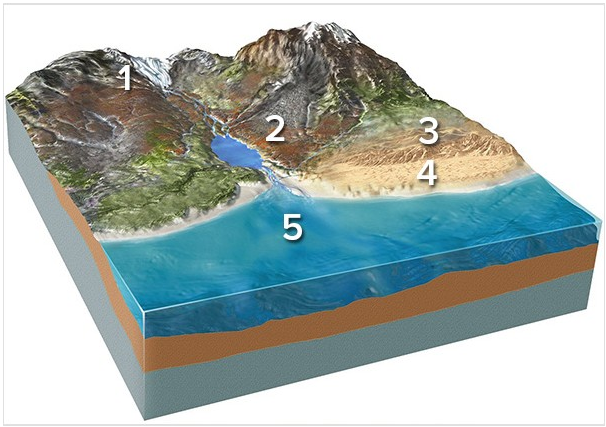Other than natural seismic waves, what kinds of things create seismic waves that scientists study?
What will be an ideal response?
Answer: Scientists gain knowledge about seismic waves not only from earthquakes, but from artificial explosions as well. During the 1950s and '60s, seismic stations were established around the world. Initially these seismometers were set up to measure seismic waves from underground nuclear bomb tests during the Cold War. These seismometers pick up seismic activity from explosions in rock quarries and mines, as well as human disasters such as the World Trade Center attacks.
You might also like to view...
The region with the greatest number of urban areas vulnerable to sea level rise is
A) Europe. B) South America. C) Australia. D) Africa. E) Southeast Asia.
Which of the following locations would contain sand, rounded stones, and broken shells?

A) Location 1, along the margins of a glacier
B) Location 2, along a steep mountain front
C) Location 3, in sand dunes
D) Location 4, along a beach
E) Location 5, on relatively deep seafloor
Groundwater represents the largest potential freshwater source on Earth
Indicate whether the statement is true or false
In a food chain, grass absorbs sunlight to make sugar, the grass is eaten by a rabbit, and the rabbit is eaten by a fox. What is a throughput that connects this system?
A. ATP B. energy C. sugar D. the will to survive